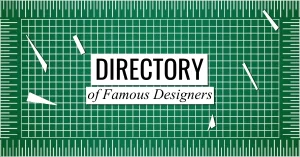Systems Design is the process of making a product or service from start to finish which is run through an organised system. The stages and features of this system are the building blocks of the process. Designing such a structure is called “Systems Design.”
To understand this with an example, let us assume a mobile app on which you can purchase crisps and snacks. You can buy potato chips, crispy rings, cheese puffs and every one of your favourite snacks. This app will have a chain of departments that make it possible for you to get your favourite popcorn brand to your doorstep.
In the first stage, there will be farmers who grow corn, potatoes and other ingredients. In the second stage, there are factories that process the ingredients to make the snacks. Then there is packaging, and after that comes marketing and management. Then there is the software app and e-commerce delivery. Even in between each of these stages, there will be many little departments that connect the bigger departments to each other. For example, the design department will make the packaging attractive. They are the link between the distributors and the marketing department.
To successfully run such an operation, there is a major need for a systems designer. A systems designer will ensure that this whole process from growing the corn to delivering the popcorn to your doorstep is done smoothly through a streamlined process. Every company follows their own system and does what works best for them. Over the years, the system can even get upgraded to suit growing needs. But still, there are some features of systems design that have become important pillars no matter which system you adopt.
In this post, we will explore the top 5 important features of systems design through the same lens of a company that sells snacks through a delivery app. This will be a simplified explanation of systems design for beginners to better understand this design sector.
Compartmentalisation
A systems designer tends to group tasks that have similar characteristics into compartments. For example, packaging design, ad design and branding design would form one compartment in a huge company. This makes it easy for these departments to exchange ideas, understand the needs of the consumer and so much more. The human resources working in these departments also become familiar with each other because their jobs are so closely connected.
Functions
Each compartment has its function. When these functions are performed well, the product can move along the stages of manufacturing to marketing and finally to consumption with ease. For example, the function of the agro sector in a snack company is to grow corn or potatoes to make snacks. The package designers on the other hand will have to design packets for the chips. These are two very different functions. A good systems designer recognises the differences in each department and places them in the right place on the manufacturing chain.
Priority of Stages
Once the functions are recognised, it is important to place them at the correct stage in the process. It would be unwise to give app designers first place in the process and place the farmers’ union in the last stage. After all, what snacks will the consumer buy on the app if the farmer has not yet gown the potato to make the chips? Systems designers place these functions in the correct order to keep the process running smoothly.
Streamlined Process
Even experienced systems designers don’t always get it right on the first try. The packaging and app designer could be an earlier stage in the process and they are followed by the marketing department. This is not wrong. After all, the marketing department must find a way to sell the final product to the consumer. However, the company has just learnt a new detail about the consumer that would cause a change in the packaging and app design. They found out about this after a market analysis of the consumer. A good systems designer recognises the faults in the process and ensures the marketing and design design departments address the challenges. The point here is that even in systems design there is trial and error. This is why prototyping, simulation and regular analysis of the system are very important.
Idea to Outcome
Flow charts, hierarchy diagrams that resemble a family tree and outlines containing information about every link in the chain are the tools of a system designer. Basically, Systems Design is like a perfect combination of logic and design. The first link of this chain is the idea itself. This is the idea for the product or service. The final link is actually making that product or service and putting it to final use. A talented systems designer knows how every link in this chain works from start to finish or rather from idea to outcome. The systems designer will create a structure upon which each employee and department will function in a way that extracts the best work with the least input. Furthermore, this must also be a sustainable system. A systems designer is the key to ensuring the company works optimally.
Software for Systems Design:
- Adobe XD
- Salesforce
- Invision
There are many more Wireframing software available but each company tends to use their own for which a systems designer might have to undergo training to learn. Software consultancies accommodate these features of systems design to make the best software for such large corporations.







0 Comments